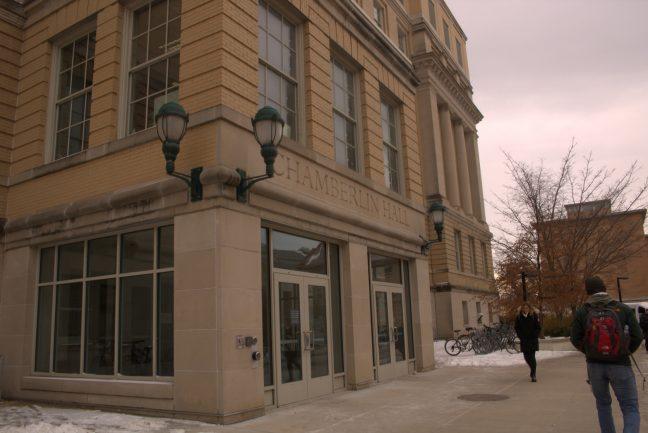The University of Wisconsin’s physics department was recognized for its experimentation and creation of one of the most highly-efficient atomic clocks ever.
The optical lattice atomic clock is behind the advancement of this level of timekeeping ability, and it is distinctive due to its high degree of precision. To put it simply, the optical lattice refers to a set of standing wave lasers in which atoms can be trapped and where the fundamental properties of matter can be tampered with.
The Kolkowitz Lab is led by UW assistant professor of physics Shimon Kolkowitz. Kolkowitz’s lab, which focuses on quantum science and atomic experiments, conducted an experiment that detected a difference between two of their separated clocks of only one second for every 300 billion years. This not only sets a world record but also highlights the overall accurate nature of the atomic clock.
The Lab Report: Vanderburg Lab studies star death, orbiting exoplanets
“A clock is just something that ticks at a frequency and exhibits some periodic phenomena that you can measure, observe or count to keep track of time,” Kolkowitz said. “For a grandfather clock, it’s a pendulum that swings back and forth. In modern electronics, it’s a little tuning fork.”
The problem that arises with mechanical clocks, which utilize materials such as a quartz tuning fork, is that every single one will be slightly different. They will not vibrate at the same frequency because of the imprecision of both making the tuning forks and controlling their environment. Kolkowitz said this is why devices not connected to the internet, such as microwaves and alarm clocks, start to lag after a while.
Kolkowitz Lab researcher and UW graduate student Jack Dolde said the underlying principle of the atomic clock is that all atoms, specifically the ultracold strontium ones trapped in optical lattices, are completely identical.
“What we can do is exploit the actual difference in energy levels between the orbits of the electron, and by using quantum mechanics, we can turn that energy level into a frequency we can keep track of,” Dolde said.
UW CIMSS uses new satellite data to create products, identify cloud types
For any atom of the same element, any electron going through an energy change will absorb or emit the same exact frequency. Atomic clocks create a sort of a standardized measurement of time through the use of lasers that pick up on vibrations matched to a specific frequency.
But rather than just measuring the absolute amount of time that has passed, the lab had several clocks operating simultaneously. This way, Dolde said any discrepancy in the atom’s measurement of time could be accredited to outside environmental factors.
This kind of research is not inapplicable to the average person. In fact, atomic systems can be used to develop new metrology and measurement tools that have real applications to our everyday lives. For example, the core of a GPS apparatus consists of multiple atomic clocks that contribute to its accurate navigation, Kolkowitz said.
The accuracy of the atomic clock can also be taken advantage of to help counter time variations in space navigation. Its stability and precision can make exploration possible without constant updates needed from Earth. Additionally, the precise nature of these clocks can aid in the detection of dark matter and other new physics discoveries, Kolkowitz said.
The Lab Report: Studying the impacts of climate system changes on volcanoes
The unique aspect of this experiment is that the lab managed to accomplish all of this using a laser of relatively average caliber. Both Kolkowitz and Dolde said it is important to note that their precise results exist independently of these circumstances.
Currently, Kolkowitz said his lab is in the middle of conducting tests of relativity. Specifically, gravitational redshift can be tested by measuring how time passes differently for clocks separated by only centimeters or millimeters. There also exists, at the heart of relativity, Einstein’s equivalence principle.
“The equivalence principle says that being in a gravitational field is actually the same as being in an accelerating reference frame,” Kolkowitz said. “But no one has directly checked whether gravity and accelerations give you that same sort of phenomenon behavior or not.”
Sure enough, this experiment can be carried out by these highly precise clocks. By and large, both Kolkowitz and Dolde said they are excited to continue to explore Einstein’s thought experiments and further research in their lab, which could help shape the frontier of physics.


















